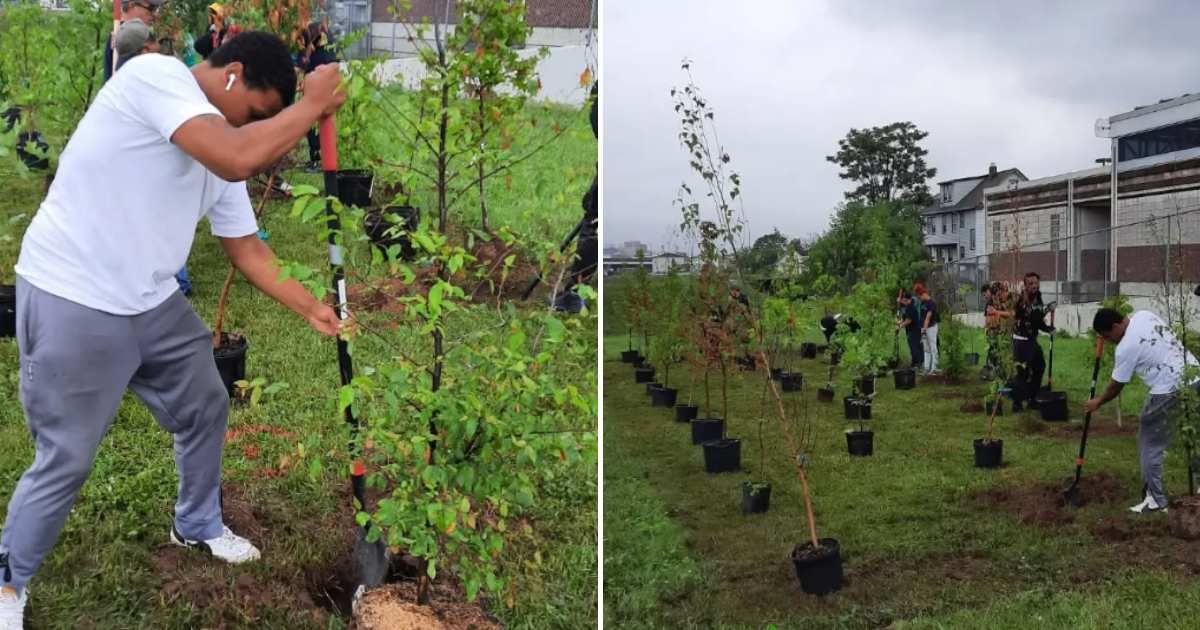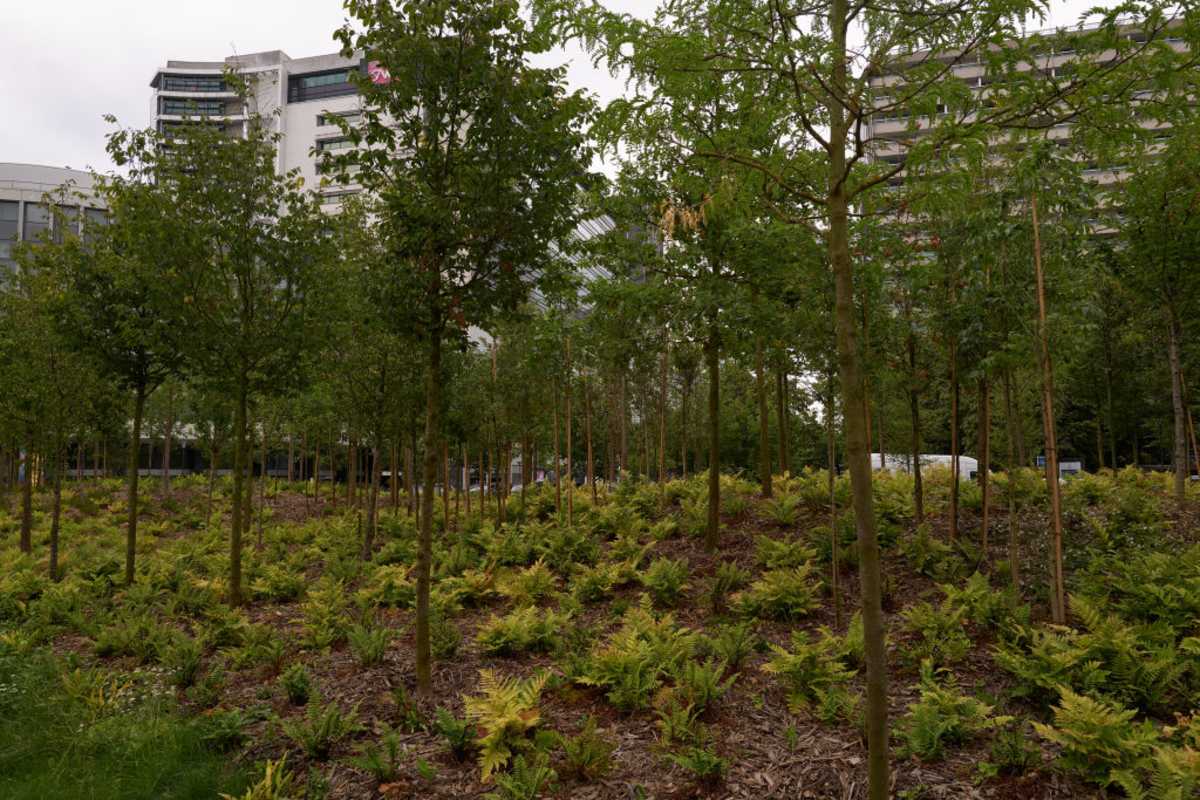A City in New Jersey Is Dotted With Mini Forests That Are Benefitting Both People and the Planet

Forests play a vital role in maintaining the right environmental balance by absorbing harmful gases like carbon dioxide and producing oxygen. Their presence benefits both animals and human beings in a variety of ways. Whether it’s the much-needed shade on a summer day or the hidden role in preventing floods, forest trees are truly the silent guardians. Recently, people of New Jersey came up with a thoughtful idea of planting tiny forests in urban spaces. Beyond offering a green escape, they also help combat climate change and clean the air.

As reported by the New York Times, the idea of setting up a microforest first came up in 2021 from the vision of farmer and Groundwork Elizabeth’s (@groundworkelizabeth) executive director, Mr. Evangelista. In just a few years, four more miniature forests have been set up. Of this, two are located beside senior housing complexes, one at a cemetery, and another on the grounds of a nearby elementary school. To turn the idea into reality, the group of experts went with the Miyawaki method. In this method, native plants are planted together to let them grow quickly. This tiny forest is planted in a 45-foot by 40-foot plot and is exactly like a forest, packed with hundreds of plants.
View this post on Instagram
Evangelista spoke about this and said, “This is one of the only places in Elizabeth where you can stand in the middle of a forest. I just love being in here.” He added, "[Within five years], you’ll get the same oxygen production and carbon sequestration that a forest that’s 50 years or older is producing. So, you can make a huge impact quickly.” Apart from battling the effects of climate change, these microforests are also a beautification effort. These tiny green spaces also hold the potential to create income through ecotourism ventures, as reported by Good Food Movement.
Tiny urban forests can help #rewild urban settings and help fight #climatechange. The brainchild of the Japanese botanist Miyawaki is taking his idea global.
— Mike Hudema (@MikeHudema) August 11, 2025
We have so many solutions. Implement them. #ActOnClimate#climate #forests #nature #biodiversity pic.twitter.com/qUGkvMfW6X
However, while the concept stands out for its originality, recreating forest-like soil comes with a hefty initial cost. Shubhendu Sharma, founder and director of Afforestt, spoke about one of the key aspects of the Miyawaki method and said, “Finding the native species in a region is a complex process. Many who claim to practice ‘Miyawaki’ don’t take it seriously and instead visit a nearby nursery to identify local species. Identifying the right species and the combination of plants that can go together is the crux."
While it is innovative, the Miyawaki method also has certain disadvantages. One major drawback is its reliability. Experts in the field have argued that the approach might not work effectively in every environment, especially in tropical zones. Not just this, in some cases, the concept of Miyawaki forests has even been misused as an excuse to cut ancient forests, which should not be acceptable. Although developing green zones in busy metro cities is important today, Miyawaki forest cannot cover up for vast, naturally occurring native forests.
More on Green Matters
A New York Resident Has Been Quietly Transforming Empty Tree Pits Into Amazing Micro Gardens
Environmental Activist Is Revamping Urban Landscape With Her Clever 'Guerrilla Gardening' Idea
This ‘Plantfluencer’ Transformed Her Home Into an Urban Jungle In The Most Spectacular Way